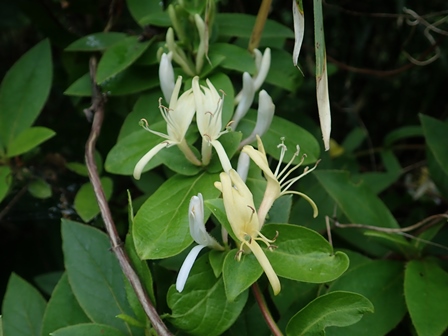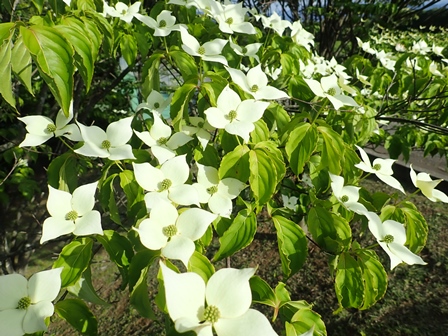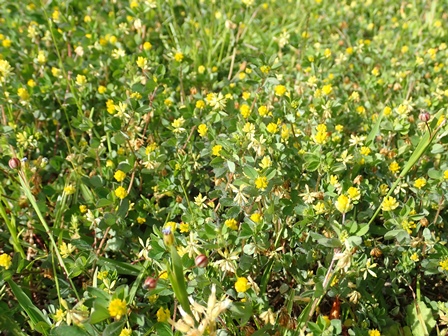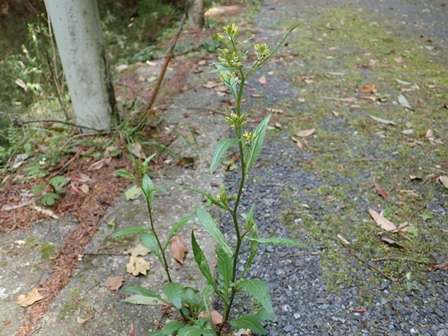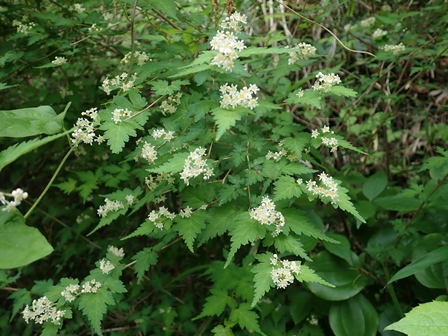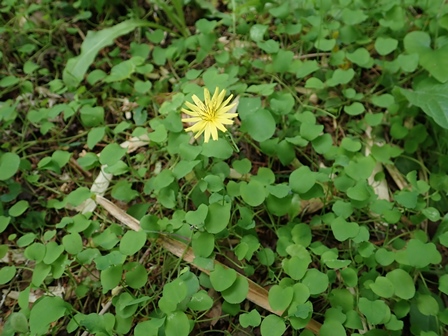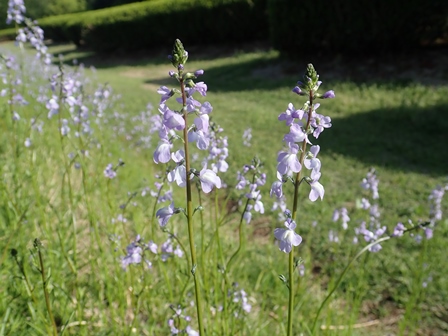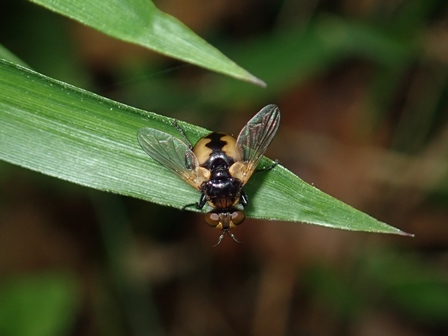フィールド日記
2021年05月
2021.05.28
スイカズラ
裏道でスイカズラが咲いています。花には甘い香りがあり、付け根には蜜があります。スイカズラは吸い葛の意味で、蜜を吸うことができるつる性の植物であることを示しています。
Vine plants called "Sui-Kazura (スイカズラ)" are in bloom on the back road. Their flowers smell sweet and have nectar in the base. "Sui (スイ)" in the name means "suck" and it comes from the fact that you can suck the nectar from the flowers.
2021.05.25
ヤマボウシ
プール横でヤマボウシが咲いています。花弁に見える白い部分は、総苞(そうほう)と呼ばれる花の集まりを包む葉の変化したものです。
下の写真のように、白い総苞の中心に、緑色の小さい花が多数集まっています。
"Yamaboushi (ヤマボウシ)" trees are in boom by the school pool. The white parts that look like petals are actually not petals. After their leaves turn to white, they, which are now called "bracts", wrap flowers. As you can see in the second photo, the small green flowers are gathered in the center of white bracts.
2021.05.21
コメツブツメクサ
築山でコメツブツメクサが咲いています。ヨーロッパ原産の帰化植物で、空き地などで普通に見られます。和名は米粒のように小さくて、シロツメクサ(クローバー)に似ていることが由来です。
"Kometsubu-Tsumekusa (コメツブツメクサ)" plants are in bloom in the artificial hill. They came from Europe and are now commonly seen in vacant lands. "Kometsubu" and "Tsumekusa" in its name mean "rice grain" and "clover" respectively. They are actually small like rice grains and resemble White Clover plants.
2021.05.18
イヌガラシ
裏道でイヌガラシが咲いています。植物では、名前に「イヌ」を冠するものがよくあります。特に、別の有用植物に似ているが、役に立たない植物に多いようです。イヌガラシもからしの原料であるカラシナに似て非なるものという意味と考えられます。
"Inu-Garashi (イヌガラシ)" plants are in bloom on the back road. In Japan, there are some plants whose names begin with a word "Inu (イヌ)". This is often used to refer to plants which look like other useful species but are not actually useful themselves. In this case, "Inu-Garashi (イヌガラシ)" means that this species looks like the "Karashina (カラシナ)" plants that are used as spices called "Karashi (カラシ)".
2021.05.14
コゴメウツギ
校舎の裏でコゴメウツギが咲いています。和名のコゴメは小米の意味で、白い小さい花が多数つくことに由来します。太平洋側に多く、不二聖心でもよく見られますが、日本海側には少ないようです。
"Kogome-Utsugi (コゴメウツギ)" trees are in bloom behind the school building. "Kogome (コゴメ)" in its name means crushed rice and comes from their white small flowers. They are often seen on the Pacific side and they are often seen in Fuji-Seishin as well, but they are less seen on the Japan Sea side.
2021.05.11
イワニガナ
道路わきにイワニガナが咲いています。別名をジシバリ(地縛り)といい、茎が横にはって伸びていき、所々で根を下ろしていくため、地面をおおうように成長することに由来します。近縁種に、より大型のオオジシバリがあり、不二聖心では両方見ることができます(オオジシバリの記事はこちら)。
"Iwanigana (イワニガナ)" plants are in bloom along the roadside. They are also called "Jishibari (ジシバリ)" and it came from the way how they extend their stems on sideways and root here and there. Their close relative species are called "Oo-Jishibari (オオジシバリ)". They are literally larger than "Iwanigana (イワニガナ)". You can find both in Fuji-Seishin. (Click here to read the article about the "Oo-Jishibari (オオジシバリ)".
2021.05.07
マツバウンラン
お茶畑でマツバウンランが群生しています。北アメリカ原産の帰化植物で、道端や芝生などでよく見られます。1941年に京都市で初めて見つかり、その後分布を広げ、2000年代には関東地方の都市部でも多く見られるようになったようです。
"Matsuba-Unran (マツバウンラン)" plants grow gregariously in the tea field. They came from North America and are often seen along the roadside and in lawn, etc. They were found in Kyoto city in 1941 for the first time and have expanded their habitats. In the 2000s, they started to flourish even in the urban area of the Kanto region.
2021.05.04
マルボシヒラタハナバエ
クヌギ林でマルボシヒラタハナバエを見つけました。体は丸みを帯びていて、黄色い腹部には黒い紋があります。ヤドリバエの仲間で、成虫は花に集まりますが、幼虫はカメムシに寄生します。
I found a "Maruboshi-Hirata-Hanabae (マルボシヒラタハナバエ)" in the Japanese chestnut oak woodland. Their bodies are roundish and their yellow abdomen has a black pattern. They belong to the tachina fly group. While the adults gather in flowers, the larvae parasitize stink bugs.
- 1 / 1


